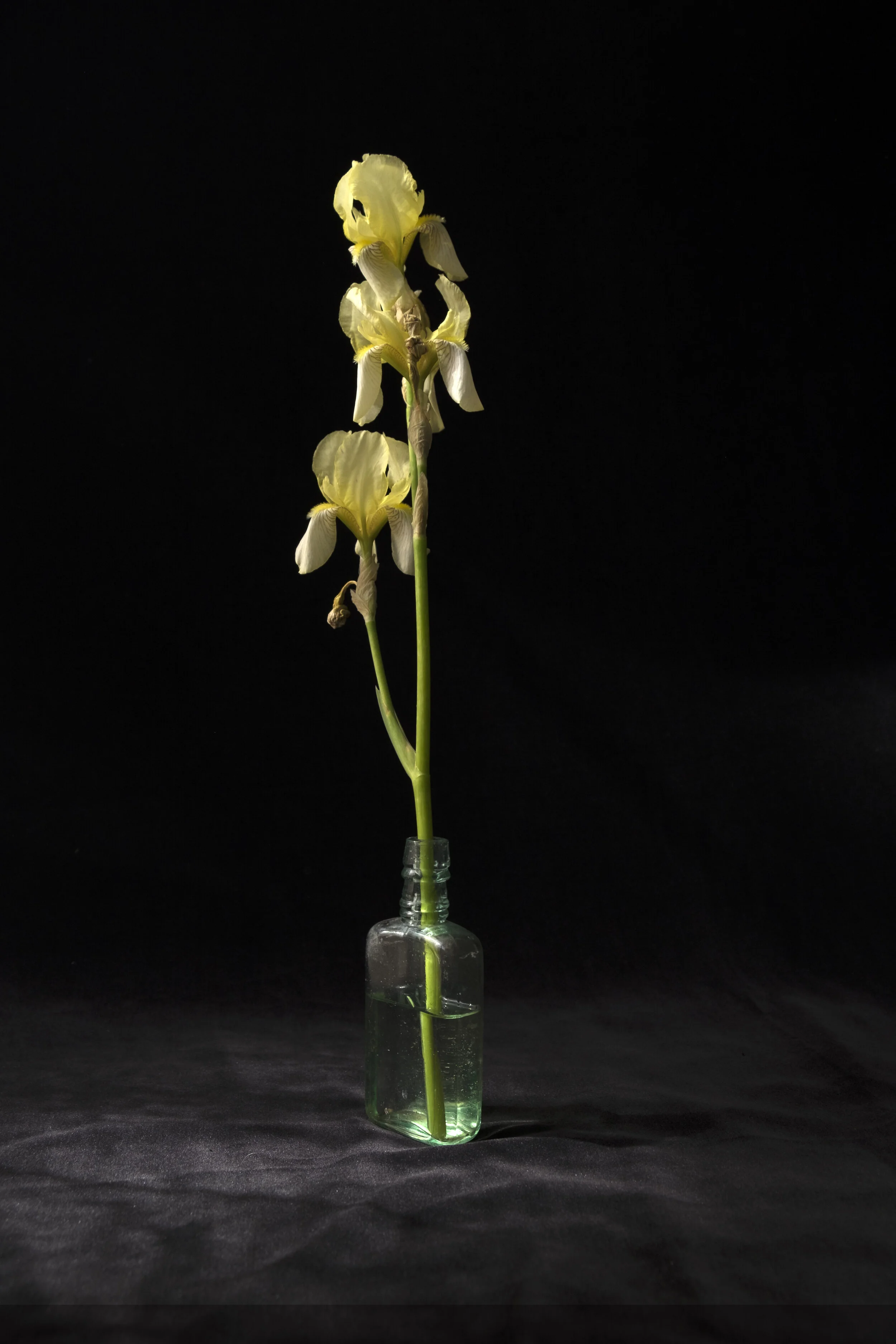The Gardener's Friend — On Iris
You are a recipient of Coucou Postale, a postcard series designed to engage and delight readers through stories and art using good old fashioned mail and the magic of the Internet.
Iris — Lopez Island, Washington 2017
“Beauty and the devil are the same thing.”
Robert Mapplethorpe
As a child, I lived a cloistered life. Although raised free-range, inward reflections were less encouraged. So when, at 16, I expressed interest in attending a special high school with arts at the core of the curriculum, I begged my parents to let me apply. Creativity was growing inside me, and I needed a way to nurture it. I put together a portfolio that consisted of portraits mainly, but I also included some floral work in black and white. I was accepted. At last, I had a place and way to feed my voracious curiosity for my inner and outer worlds.
One of the photographers whose work I connected with as a high school student was Robert Mapplethorpe. His work was shocking. Naturally, my overly restrictive upbringing resulted in a craving of anything verboten. Had I been able to find his books, I wouldn’t have dared to bring them home. The year before, my mother took a pair of shears to my copy of D.H. Lawrence’s Lady Chatter’s Lover. I was certain Mapplethorpe’s work would encounter a similar fate. Even if I had liberal parents though, most of Mapplethorpe’s subject matter, nudes that challenged images of classical beauty, was off-limits to a minor in a public school setting. Luckily, there was another realm he explored later in life. Flowers.
One image, in particular, was an iris. Carl Linnaeus named the flower “Iris” for the Greek goddess who ferried messages to the gods and goddesses of Mount Olympus from the Earth via a rainbow. Indeed, the family Iridaceae come in a spectrum of colors. In culture, irises became intertwined with heraldry when King Clovis converted to Christianity and adopted the stylized iris as his symbol because, at the time, the iris was associated with the Virgin Mary. Today, irises are used for water purification, although some states in the United States have banned them in public works because they clog natural waterways. They still symbolize Marian ways of being, a fact which Mapplethorpe would have known.
If he intended to corrupt the connection between Mary and the iris, he never spoke about it. His work fixated on turning conventions on their head, and nothing was more conventional a belief that the godhead is all goodness and light. His iris seemed to question the possibility of a necessary reality that encompassed both. Despite being a bright light in the art world, Mapplethorpe found himself in a dark place towards the end of his life, which was when he began making the floral portraits.
By personifying the flowers, he uncovered the thing that compels us to surround ourselves with them most of all. They remind us of who we are on the most basic of levels. In the case of the flowers, by the time Mapplethorpe began shooting them, his health had deteriorated. He was yet another victim of the AIDS HIV/ AIDS pandemic sweeping the nation at a time when contracting the disease was a death sentence. The sleek, muscular and bright human bodies (including his own) that once filled his lens reminded him of what he was losing, so he replaced them with a less threatening form. Flowers were elegant, colorful and could easily dazzle. The world can always use more dazzle.
For Mapplethorpe, I surmise flowers served another purpose, too. Confronted with his mortality, he used flowers to comfort himself. There have been moments in my life when the whiff of blooms or the sight of pink petals, shake the burden of the world from my shoulders. Mapplethorpe would die in 1989. By then he had shot enough flowers to fill a funeral parlor, but instead, they filled a book.
- FIN -
This essay concludes the On Blooming series. If you enjoyed this series, prints from this postcard series are available in my shop. Thank you for your attention! I hope this series brought you a little joy. Cheers!

